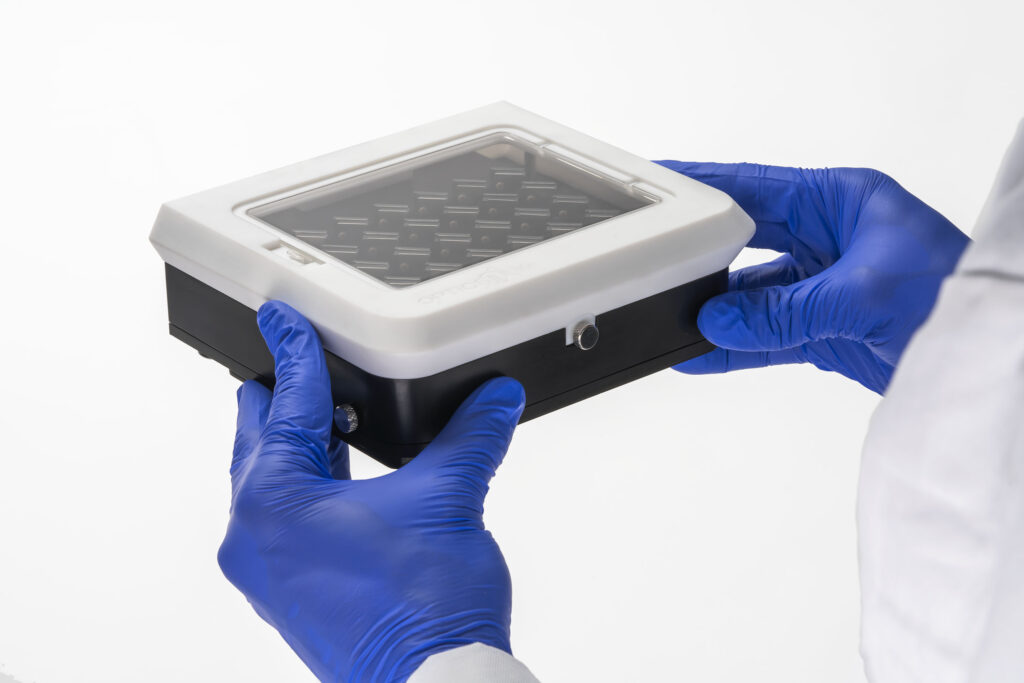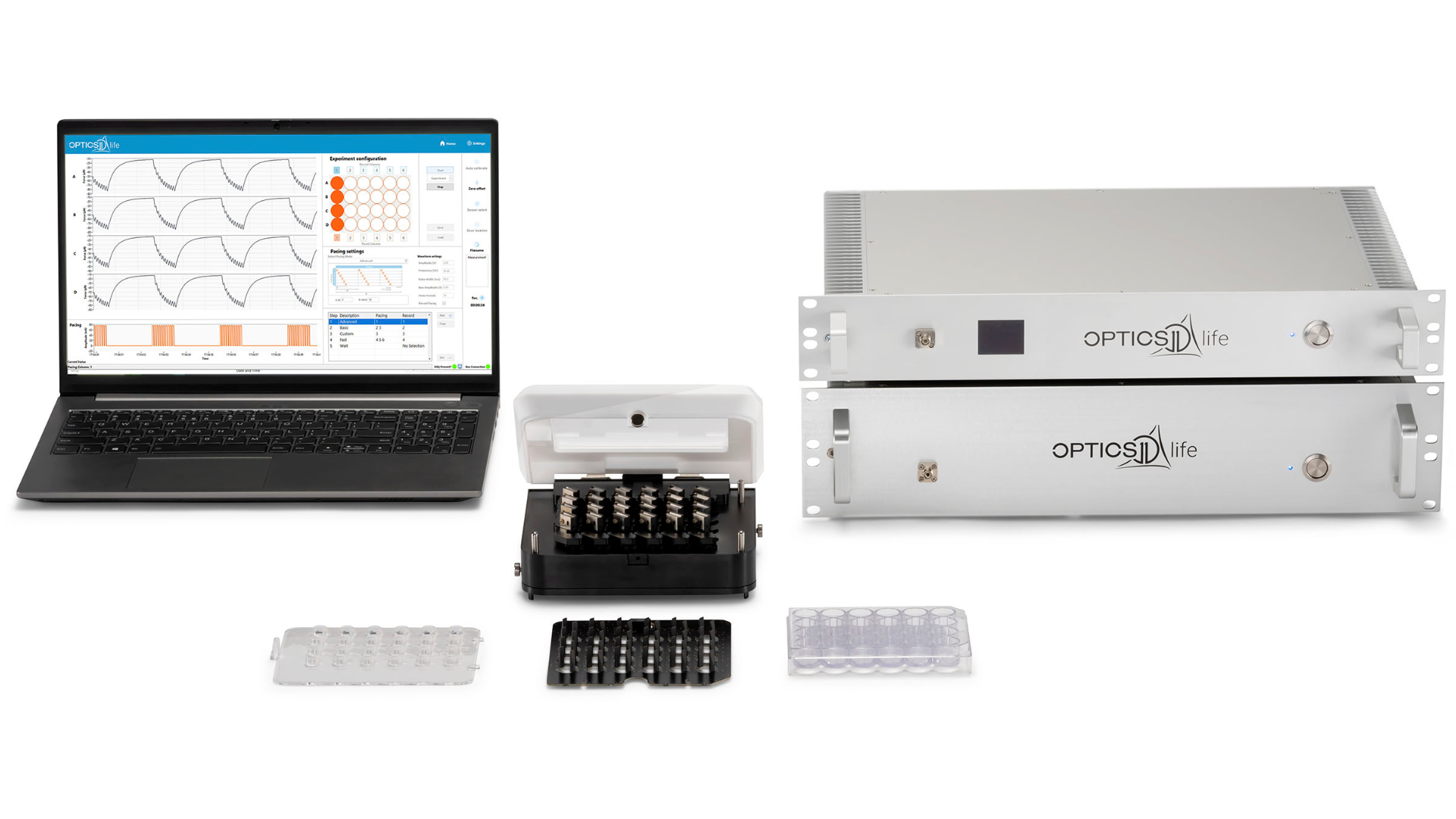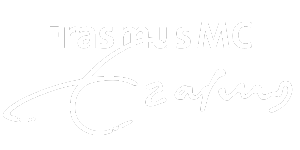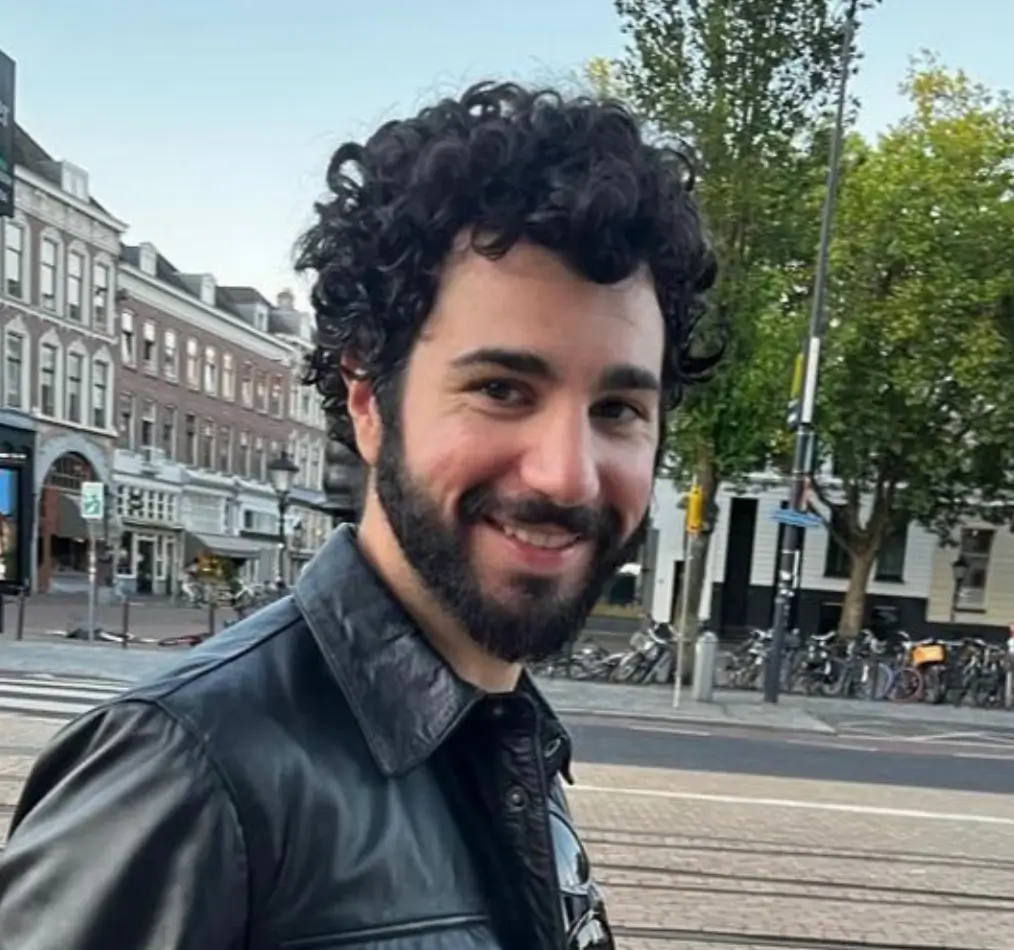Preclinical in vitro models of muscle diseases
Preclinical in vitro models of muscle diseases, including muscular dystrophies and muscle metabolic diseases, must be physiologically relevant and accurate to support efficacy studies of novel therapies. Muscle contractility is a critical and clinically relevant indicator of muscle functionality and health. Conventional functional assays are low-throughput and costly, while animal models have shown limited clinical translatability and poor predictability of drug responses in patients with muscle diseases.
These limitations can be mitigated by using 3D engineered muscle bundles. A 3D skeletal muscle contractility platform models muscle diseases in a physiologically relevant manner, providing significant potential for studying disease progression and discovering novel drug targets.
Muscle contractility has emerged as one of the most relevant functional read-outs for assessing muscle health under pathological conditions. Directly quantifying the force produced during contraction is the primary method for evaluating contractility, often facilitated by electrical stimulation that induces specific contraction patterns.
Several electrical stimulation protocols have been developed on our 3D muscle platform to perform muscle exercises, enhance muscle maturation, and improve the physiological relevance of 3D muscle tissue.

Limitations of existing muscle tissue models often lead to inconclusive preclinical outcomes and contribute to a high failure rate (90%) of drug candidates in clinical trials*. In muscle diseases, functional human 3D in vitro assays are becoming increasingly relevant in early-stage evaluation of drug safety and efficacy for therapy development.
Cuore accurately and automatically measures the contractile force of 3D muscle model over time in a physiological environment. It advances research into in vitro muscle disease models for novel target discovery and preclinical drug development.
Measure fundamental contractile properties of healthy and diseased 3D muscle tissues by assessing twitch, tetanic, force-frequency, and fatigue assays.
Set up customized protocols for electrical stimulation in a high throughput and automated manner. Mimic muscle physiology and compare healthy versus diseased conditions under various types of stress-induced exercise.
Monitor contraction kinetics of healthy and diseased muscle tissues over time. Improve the efficiency of therapeutic target selection and the measurement of acute and long-term efficacy and safety of therapeutic compounds for muscle diseases treatment.
Investigate contraction kinetics and exercise effects on muscle diseases in real-time, gaining a deeper understanding of muscle disease (patho)physiology and its mechanisms.
Demonstrate the efficacy and safety of novel muscle treatments using contractility measurements, customized exercise, and live monitoring.
Incorporating muscle contraction into 3D muscle engineering will:
Advance your in vitro models
3D-engineered muscle ensures in vivo-like muscle behavior and pathophysiology.
Automated, real-time muscle force measurement provides a direct readout of muscle function as an indicator of muscle diseases and the effects of therapeutic compounds.
Improve preclinical outcomes using 3D muscle models with physiologically and disease-relevant functional readouts.
Enhance the predictability of drug compounds and increase clinical trial success affected by interspecies differences.
Develop a reproducible and standardized muscle disease model with ready-to-use protocols, automated recordings, and user-friendly software.
High throughput platform using fewer cell numbers and an autoclavable system to reduce costs and increase experiment efficiency.













Whether your focus lies on mechanical measurements and characterization at the cell scale, or you work with muscle tissues, our platforms offer you precise, fast, and accurate outcomes. Discover more about how our products can help you accelerate and achieve your research goals.
With a wide range of application areas, across an array of samples, for various disease areas and testing needs, we can provide you with precise insights into mechanical cues to advance your translational research. Learn more about our applications here.
We are a growing team of 60+ passionate people, headquartered in Amsterdam, the Netherlands. Learn more about our journey so far, meet our team of professionals, and our career opportunities.
Resources
Contact